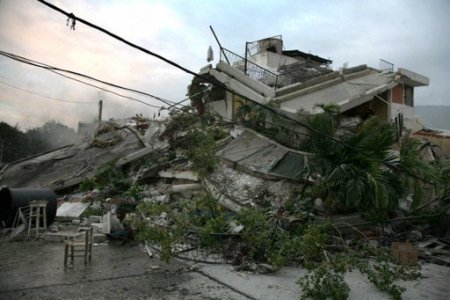Earth Sciences and Seismic Engineering Center (ESSEC) at the University Issues a Report on Haiti Earthquake
13 January 2010
Earth Sciences and Seismic Engineering Center (ESSEC) at the University Issues a Report on Haiti Earthquake
The Earth Sciences and Seismic Engineering Center at the University issued a report, on the 13th of January 2010, on the earthquake that struck the Island of Haiti on Tuesday, 12 January 2010. The report reveals that the Island was struck by a devastating 7.2 magnitude earthquake as recorded on the Richter Scale. The earthquake centered close to residential communities and the coordinates were: longitude 18.41 and latitude 72.56, while the epicenter was 16 kilometers southwest of the city of Carrefour.
Casualties and damages are expected to be overwhelming for the following reasons:
- The fact that the epicenter is close to residential communities.
- The earthquake's hypocenter was only as deep as 10 kilometers, which means that the impact of the earthquake will be more severe.
- The nature of the buildings in the area and their inability to withstand earthquakes.
Clear and initial signs that indicate the likelihood of buildings in Haiti to collapse when exposed to an earthquake include: the unexpected collapse of some of the public and governmental buildings, especially vital ones, that are usually carefully designed to withstand earthquakes. In comparison to other normal buildings, those vital institutions are expected to work aftermath, however, considerable damage was reported in these buildings. Thus, other normal buildings will certainly reflect a catastrophic image.
However, what helped to reduce casualties in public and governmental buildings is the fact that the earthquake took place at 16.53 pm according to the local time of Haiti during which those buildings are often empty. The damage to the infrastructure, especially communication, electricity, water, sanitation and road networks will have devastating impacts on rescue missions in the next days. The collapse of buildings will cause a great problem to disaster management missions and coordination of international relief organizations.
What is the status of public and governmental buildings in Palestine and the Arab world:
On the basis of the researches that study the likelihood of public, normal and governmental buildings to be damaged by earthquakes, it is clear that many of these buildings do not have the minimum protection measures against earthquakes. It is expected that such buildings will suffer clear constructional and non-constructional damages if a 6-7 magnitude earthquake strikes. This is what The Earth Sciences and Seismic Engineering Center has continuously pointed out to on various occasions, and the awareness that it tried to raise among citizens, specialists and decision makers in Palestine and the Arab world regarding this matter.





